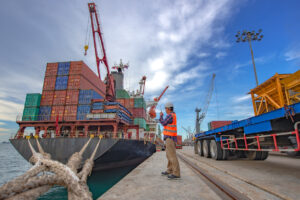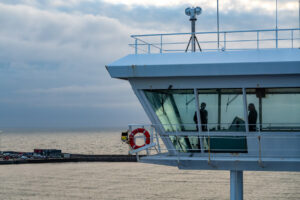The number of Irrawaddy dolphins is dwindling.
The Irrawaddy dolphin, nicknamed the “smiling face of the Mekong” because of its trademarked curved mouth, and classified as an endangered species by the International Union for Conservation of Nature, is facing extinction now.
According to World Wildlife Fund (WWF), Irrawaddy dolphins are found in coastal areas in South and Southeast Asia, and in three rivers: the Ayeyarwady (Myanmar), the Mahakam (Indonesian Borneo) and the Mekong. The Mekong River Irrawaddy dolphins inhabit a 118-mile stretch of the river between Cambodia and Lao People’s Democratic Republic and are scarce—just 92 individuals are estimated to still exist.

Death of the last dolphin in Laos
Cetacean specialists have documented the loss of the dolphins from the Chheu Teal, also known as the Cambodia and Laos transboundary pool, for years. In 1993, there were 17 dolphins living in the pool. By 2009, the subpopulation had dwindled to seven; three years later to six; and by 2018, only three remained.
In 2021, photo identification surveys led by Cambodia’s Fisheries Administration and WWF confirmed that the last freshwater Irrawaddy dolphin, only known by his code ID#35, was all alone. In mid-February 2022, ID#35 succumbed to injuries, confirming the extinct of the species in Laos.
The tail of the dolphin that died was seen tangled in a fishing net about a week earlier, the Cambodian state news agency AKP reported. It said the dolphin was unable to swim properly after that and died from injury and inability to catch its usual prey for nourishment.
“The numbers in the (transboundary) pool have plummeted over the last few years, due to multiple threats,” Lan Mercado, Asia-Pacific director of WWF, said in a February 2022 statement, “including hydro-power dam construction causing disruptions to river flow and reduced fish abundance, drowning in gill-nets, and the use of damaging fishing practices such as electrofishing and overfishing.”
Somany Phay, deputy director of Cambodia’s fisheries conservation department and the government liaison at WWF-Cambodia, stated that gill nets – vertical netting that hangs across a stretch of water to catch fish – poses the biggest threat to these beluga-like dolphins.
Even though Cambodia has established a ban on gill nets in the Mekong that spans 180-kilometer with guards looking out for illegal activity, the lack of commitment and coordination enabled illegal fishing to continue, particularly within Lao waters, according to a 2022 report from the Cambodia Fisheries Administration, the IUCN Cetacean Specialist Group and WWF.
The loss of the transboundary subpopulation ultimately came down to a “lack of participation of Lao’s authority and fishermen” in eliminating the use of gill nets and other illegal fishing practices, the report said. Illegal fishing methods using electricity or explosives will also kill dolphins directly.
In addition to being entangled in fishing nets, the dolphins are also threatened by pollution, according to Cambodia’s Fisheries Administration and other conservationists. Pesticides, heavy metals, plastic particles and other run-offs from industries, agriculture, and towns have contributed to past dolphin mortality and the many more to come if persisted.
In recent years, rising temperatures and construction of upstream dams made the river shallower, leading to a decrease in the number of aquatic species that the dolphins eat.
Dams and irrigation systems also reduce habitat availability for fish and dolphins, particularly in the crucial dry season, change the water flow and block fish and dolphin migration.
The potential increase in boat traffic in the Mekong thanks to tourism and even China’s talks about leveraging the river as a trade route could disturb dolphins, lead to stress and illness, and even result in collision-associated deaths of dolphins through contact with the propeller.

Irrawaddy dolphins are important
“The Mekong dolphins are not only part of the world living heritage but they also represent the national symbol and pride for all Cambodian people. Key threats to these species must be addressed collectively,” said Teak Seng, Country Director of WWF-Cambodia, showing the significance of Irrawaddy dolphins to local communities.
Thousands of tourists visit the dolphin pools in Laos every year. In fact, dolphin-watching tours have more than doubled since 2008, according to WWF. However, as the dolphin numbers and sightings declined, the tourist destination eventually lost its charm.
The disappearance of the Irrawaddy dolphins from Lao waters significantly impacted the eco-tourism in the area, taking away one of the major contributors to growth. Other than the permanent loss of potential ecotourism revenues, the tourism-related livelihoods and businesses such as boats, platforms, viewing points and restaurants run by locals in Champassak province in southern Laos had been greatly affected.
The WWF stated that dolphins are an important indicator of the health and sound management of the freshwater resources, and their decline could signal a potentially devastating decline in the health of the entire river ecosystem.
A study by MF Van Bressem published by the Diseases of Aquatic Organisms (DAO) on six Irrawaddy dolphin populations documented high levels of skin abnormalities thought to be associated with poor water quality. This corresponded to the current pollution problem which affected the water quality in Mekong.
The Mekong River Commission said that 68 fish species recorded from the Lower Mekong Basin are globally threatened. Large species such as the Mekong giant catfish have decreased in number by more than 90 percent in two decades. Beach-nesting birds are also seriously impacted by unseasonable flooding of the Mekong caused by dams and water releases.
Stina Nyström, program manager of Marine & Freshwater at WWF Sweden said: “The threats to the dolphins – and other species in the Mekong River – are severe and real, and we need to bring all efforts and resources possible to the task of saving them.”
Photo credit: Shutterstock/Jodphoto










